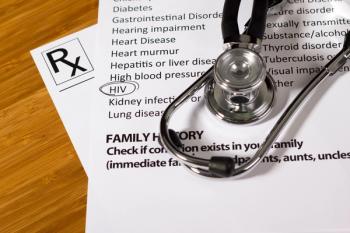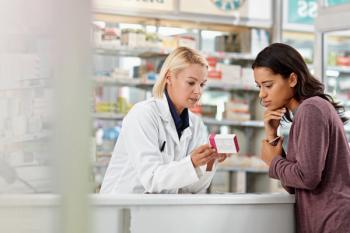
Part 2: Leverage Technology to Maximize COVID-19 Vaccinations, Boost Clinical Services, and Transform Pharmacy Practice
In part 2 of our interview, Jason Ausili, PharmD, speaks to the challenges of COVID-19 vaccination processes and dives into technology solutions for these workflow barriers.
Drug Topics®: What are some of those biggest barriers? Have they been able to keep up with demand without issues with supply?
Ausili: There was this period where, okay, we don't have vaccine yet. Let's try to prepare for the vaccine. And then boom! All of a sudden, it's like, “Okay, we've got vaccine. Now, what do we do?”
And some of the most popular barriers that pharmacies have encountered are, do I have a medical billing solution that can help me get paid for these vaccines? Because, especially the Medicare population, a lot of the Medicaid populations and the managed care organizations (MCOs), and even the uninsured require medical billing to get paid.
So, in order to do this in a way that's scalable and meaningful, pharmacists need to get the admin fee for administering the shots. So having a medical billing solution that really seamlessly integrates with their pharmacy management workflow was a key part of the overall goal.
Unfortunately, a lot of folks weren't prepared. The medical billing world is new to a lot of people and to pharmacy. They're so familiar with the prescription billing process and have sometimes gotten isolated in that world. When it came time to get used to a medical billing platform, it was a new to a lot of folks, and people had to go shopping for the right solution that could ensure that they're getting paid through all of their payer channels: Medicaid, Medicare commercial. And that's one of the angles that we've been able to help folks out. But there's a few other angles.
Dedicating resources in time was a huge struggle for many people, because their staff - the pharmacist and their staff are typically dedicated to the normal pharmacy workflow. And this massive vaccination effort created them to pivot and shift almost on a dime to free up pharmacist time to dedicate to the vaccination effort. In fact, not just pharmacists time, but the entire team needs to get involved in the process. So that was a big eye opener for many pharmacies.
Next was, you got to have a scheduling app, because you can't have a mad rush of patients in your pharmacy all at once to get the vaccine. It has to be coordinated. As pharmacies were working through the various phases, they had to wait to qualify patients for the phase and then schedule them appropriately.
And on top of that, state registry reporting is a big requirement with COVID-19 vaccination. Many pharmacies have been, exposed to them in the past with flu and other reportable vaccines, but they've done it largely in a manual way. And with the large volume of COVID-19 vaccines, it really became inefficient to try to do it manually and report those vaccines in the state in a way that wasn't automated.
And then finally, just overcoming other workflow barriers. COVID life is different for pharmacies. I remember in the beginning, people were really concerned about physical barriers and directing traffic in a way that if you did have a sick person in your store, they weren't infecting other people. So, it really has flipped pharmacy upside down in a way in parallel to highlighting the real value that we bring the communities.
So, where we're focused, Gabrielle, is really showing how technology can really overcome many of those barriers. And I'd love to be able to talk to you about that as well.
Starting at the top medical billing. Having a medical billing solution that really seamlessly integrates with the pharmacy management workflow is critically important. There's solutions that you really don't have to deviate from your normal prescription filling process. By coordinating with the medical plan, medical billers can grab that claim from the switch and convert it to a medical claim that's in a completely different format than the pharmacy claim.
But that's a really good thing, because as pharmacists, we need to ensure we're getting paid as providers and not dispensers of services. So, this is a really big move for pharmacies, and we need to double down on getting more volume and more traffic to the medical billing realm and getting more awareness from the medical payers. Otherwise, we have a steeper hill to climb in trying to get recognized as providers.
It is a new world for a lot of people. With filling prescriptions, you're so used to billing one way, and that’s billing for products, and it flows through the PBM and there's all sorts of considerations regarding reimbursement to that pathway. But in order to really get traction on the medical side, and be viewed as providers of services, we need to get more awareness and more volume on the medical billing side, so the medical payers recognize pharmacy as a provider of services.
COVID has definitely provided an expedited pathway there. And it's been a little rocky for some people as they're trying to get used to this new world, I just want to mention that, hey, this is this is scary, change can be scary. But there's folks out there to help you along the way and make sure that you're leveraging the tools that are in your tool belt, and that technology can really be used to grease the wheels for you, and help you get this done at the end of the day.
Because this is the beginning, I think of something that we see as only growing. COVID might have been a spark to the medical billing opportunities, but it's not the end. There's much more opportunities for pharmacies to show that they can drive improvement in their communities through public health, but also get paid as providers for those services through the medical billing channel.
Click here for more expert interviews from Drug Topics®.
Newsletter
Pharmacy practice is always changing. Stay ahead of the curve with the Drug Topics newsletter and get the latest drug information, industry trends, and patient care tips.















































































































